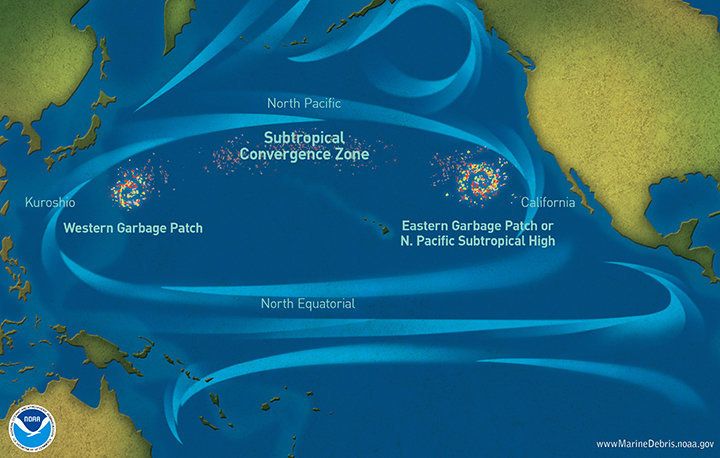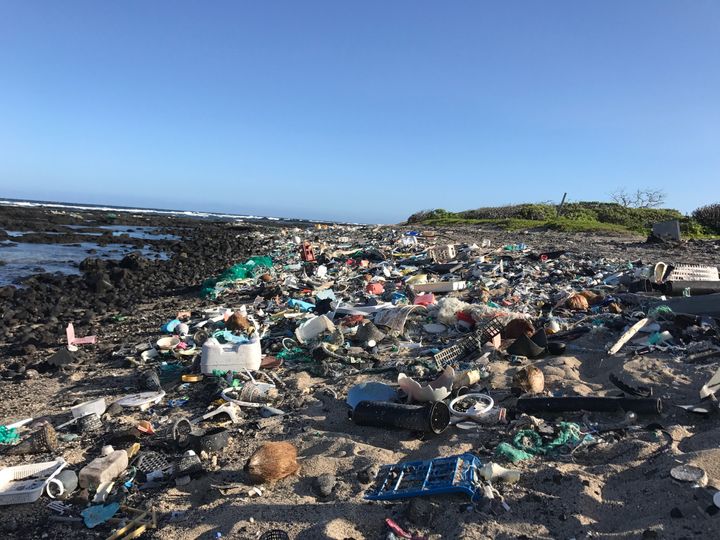New Mars Forums
You are not logged in.
- Topics: Active | Unanswered
Announcement
#51 2017-02-03 08:15:19
- Tom Kalbfus
- Banned
- Registered: 2006-08-16
- Posts: 4,401
Re: Landmaking
Where would you rather live, in Antarctica or on the surface of an ocean where it is nice and warm, where it rains often enough to get fresh water to meet your needs, so unlike in a desert, you won't be dying of thirst. Seems to me there is a lot of evaporation going on above the ocean surface, so even if it doesn't rain, you just pump ocean air through a refrigerator and the water just condenses right out, you got reverse osmosis as well to provide fresh water, but mostly you can just walk outside onto the deck and enjoy the nie ocean sun, no frostbite to worry about.
Offline
Like button can go here
#52 2017-02-03 09:28:13
- elderflower
- Member
- Registered: 2016-06-19
- Posts: 1,262
Re: Landmaking
On the water, of course, Tom. That's why I have a sailboat. I can tell you, though, that everything to do with floating on water is expensive- very expensive!
Offline
Like button can go here
#53 2017-02-03 10:57:30
- Tom Kalbfus
- Banned
- Registered: 2006-08-16
- Posts: 4,401
Re: Landmaking
Well Cargo ships seem to operate profitably. I think small boats are expensive to their contents, but with large vessels economies of scale are employed to make unit cargo shipped to be cheaper. Waterways are important because it is more expensive to ship bulk quantities over land or through the air. People on the other hand don't often have time for a week long sea voyage, so they prefer air travel. On the other hand if you don't design a water vessel to go somewhere but just to stay in one place, then you have a place where people can live.
Take this apartment building for instance, suppose we wanted to build it on water and not on land? We would need an ocean platform for that.
Get rid of the oil rig and replace it with an apartment building such as the one above.
I think the first application would be a hotel. We have cruise ships already which are basically floating hotels. Suppose we built a floating hotel off the coast of Florida, and there was a ferry to take guests to and from this hotel, the hotel sits off the shore and doesn't go anywhere, so unlike a cruise ship you don't have to wait until it is in port before you can board. If a hurricane threatens, the hotel can be towed to safety, but otherwise it stays in place, serving guests.
Last edited by Tom Kalbfus (2017-02-03 11:02:46)
Offline
Like button can go here
#54 2017-02-03 17:59:15
- SpaceNut
- Administrator
- From: New Hampshire
- Registered: 2004-07-22
- Posts: 29,905
Re: Landmaking
Not bad but what about sovernty, protection once an island is created for a business model for fun and sun....
Offline
Like button can go here
#55 2017-02-04 00:22:22
- Tom Kalbfus
- Banned
- Registered: 2006-08-16
- Posts: 4,401
Re: Landmaking
It would be treated the same under international law as a ship, I believe much as an oil platform is.
Offline
Like button can go here
#56 2017-05-01 17:56:01
- SpaceNut
- Administrator
- From: New Hampshire
- Registered: 2004-07-22
- Posts: 29,905
Re: Landmaking
I was reminded about this topic in that the pacific ocean has become the dead zone for garbage collecting and depositing on the shore of the islands.

People have found hair brushes, cigarette lighters, shards of plastic, water bottles, fishing net, straws, broken detergent bottles and discarded trash with labels in various languages, including Japanese and Russian.
Pretty disgusting....
Offline
Like button can go here
#57 2017-05-01 23:31:20
- karov
- Member
- From: Bulgaria
- Registered: 2004-06-03
- Posts: 953
Offline
Like button can go here
#58 2017-05-02 18:05:09
- SpaceNut
- Administrator
- From: New Hampshire
- Registered: 2004-07-22
- Posts: 29,905
Re: Landmaking
Captain Charles Moore of the Algalita Marine Research Foundation (AMRF) was the first to find the huge, floating plastic dump in 1997. Which is quite surprising in that its only recently found....
The inhabitat site image is quite colorful...a large ship is outfitted to retrieve, sort and melt the plastics into blocks for use in making the Island.

Recycled Island is a plan to clean up 44 million kilos of plastic waste from the North Pacific Gyre, which stretches from California to Japan, and provide 10,000 square kilometres (3,861 square miles) of sustainable living space in the process. Solar and wave energy would provide power for islanders while sustainable fishing and agriculture could provide their food.
There is an estimated 100m tonnes of plastic flotsam in the Pacific Gyre, where ocean currents cause it to accumulate. The floating dump covers an area one and a half times the size of the US.
Could always melt it down and send it to mars as seed materials.....
Offline
Like button can go here
#59 2022-09-24 05:46:56
- Mars_B4_Moon
- Member
- Registered: 2006-03-23
- Posts: 9,776
Re: Landmaking
Make Waters to Make Lands...sounds like a contradiction?
The Mars miners take a much needed vacation, Kayaking and Canoeing across artificial rivers, sea and lake of Mars? Space tourists check out the years latest menu at the restaurant, Scuba & Snorkeling and Lake tours.
Some people suggested bring animals to Mars, most would be farmed but would they be ever part of a Park or Gaming field or allowed move wild in a bigger Biodome? With Plant and Animal maybe even a Big Biosphere will have Meat Eater Predators to thin out the Herbivores, Gators, People, Small Cats, Bird and Mangroves all Entangled in the Everglades.
Mangrove Forest
https://www.worldatlas.com/forests/mangrove-forest.html
Mangrove forests are found in about 118 countries and territories within tropic and subtropic regions worldwide. Approximately 75% of the global mangroves are found in 15 countries with Asia having the highest cover at 42% followed by Africa at 21%, then Northern, Central America, and the Caribbean covering 15%, Oceania at 12%, and South America 11%. In the eastern parts of Australia, some species of mangroves grow far south between latitude 32 and 38 degrees in the Atlantic.
The Mangrove Marsh is a very Diverse Biosphere on Earth that supports all kinds of life, could it one day go as far as Mars, Saltmeadow Swamp. The saltish marsh system or saltmarsh, also known as a coastal salt marsh or a tidal marsh the coastal ecosystem in the zone between land and open saltwater or brackish waters, the Reclamation of Salty Marsh land for agriculture by using dams, dyke, cannal, converting marshland to upland was historically a common practice. Salt marshes occur on low-energy shorelines in temperate and Earth high-latitudes. The animal species Mussel is the common name used for members of several families of bivalve molluscs, Atlantic ribbed mussel, found in the low marsh, perhaps Mars will have an artificial sea, a robot fishing dredge, also known as a scallop dredge or oyster dredge, the kind of Lake or Sea dredge which is towed along the bottom of the sea . Great experiments and study done in the West and Asia and Latin America, moving these town and facility off world to Mars, the Wetlands, Marshes and Swampsare more difficult to sustain in Arctic and South Polar Regions as they ice over, when the colds come they can become tundra is a biome characterized extremely cold climate, very strong winds and little rainfall. Mangrove forests, also called mangrove swamps or mangals, are found in tropical and subtropical tidal areas, Mangrove forests can decay into peat soily deposits because of fungal and bacterial processes as well as by the action of insects. Perhaps it could be built inside a Biodome, the mangrove is a shrub or tree that grows in coastal saline or brackish water but mangrove also used for tropical coastal vegetation consisting of such species, the types bush or tree will contain a complex salt filtration system and feed of water logged low oxygen watered soil or water logged mud. Mangroves might need an artificial tidal system created on Mars, they store gases directly inside the roots, processing them even when the roots are submerged during high tide.
What Are Wetlands?
https://japan.wetlands.org/wetlands/what-are-wetlands/
Wetlands occur where water meets land. They include mangroves, peatlands and marshes, rivers and lakes, deltas, floodplains and flooded forests, rice-fields, and even coral reefs. Wetlands exist in every country and in every climatic zone, from the polar regions to the tropics, and from high altitudes to dry regions.
Why are Arctic wetlands important?
Species: Arctic wetlands offer unique habitats to both plants and animals. For many migratory species the Arctic provides indispensable breeding and feeding areas.
Livelihoods: Over four million people, including more than 30 different indigenous groups, live in the Arctic. People living in the Arctic depend on wetlands for fish and waterfowl hunting, harvesting of plants and as pastures for grazing.
Glacial lakes, marshes, wet grasslands, peatlands and rivers support unique ecosystems and services that sustain the livelihoods of people.
High altitude wetlands store water from rain and glacial melt, feed groundwater stores, trap sediments and recycle nutrients, enhancing both the quantity and quality of water.
I'm going to explore some news items that might relate to building a fake Biodome Lake with Martian trees and bushes, perhaps a mangrove Mars marsh inside a Biosphere.
World - How much is a mangrove forest worth? In some places, $850000 per hectare
https://www.coastalnewstoday.com/post/w … er-hectare
Mangroves vs. Salt Marsh
https://naturalhistory.si.edu/research/ … salt-marsh
How are marsh grasses adapted to survive in salt water
https://www.vietnambreakingnews.com/tag … alt-water/
Oyster reef habitats disappear as Florida becomes more tropical
https://www.sciencedaily.com/releases/2 … 135637.htm
Last edited by Mars_B4_Moon (2022-09-24 05:57:07)
Offline
Like button can go here